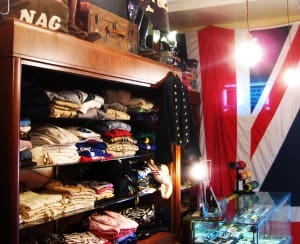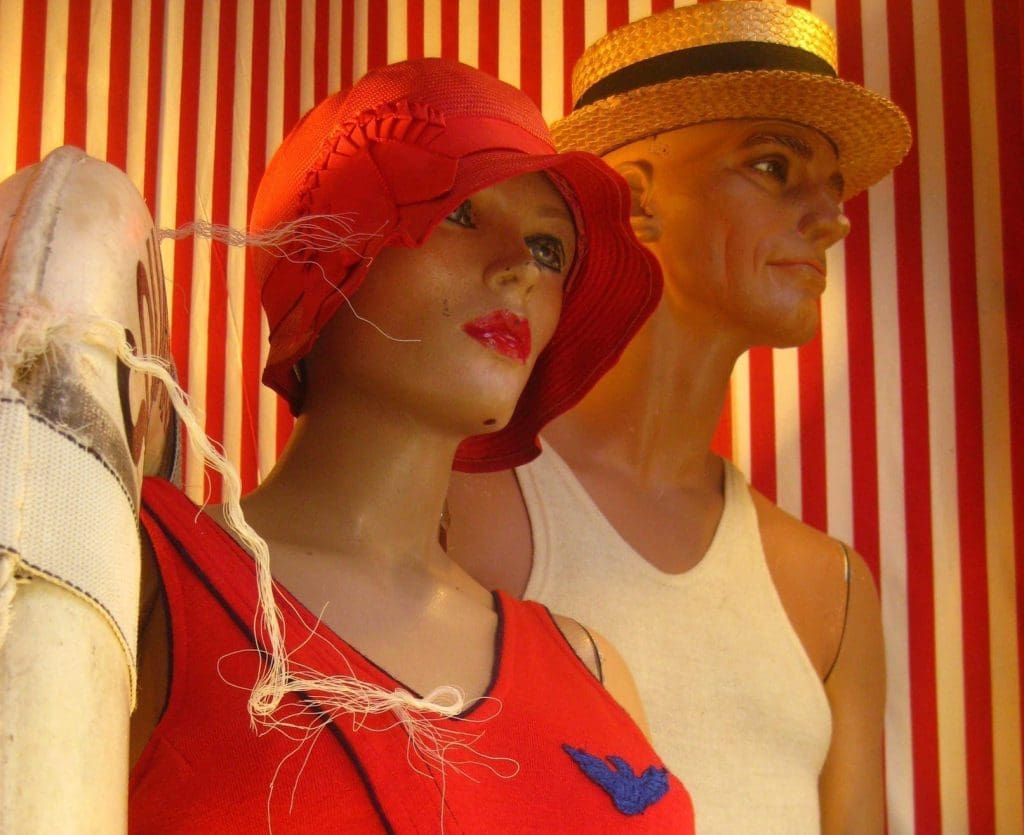My small apartment feels smaller as the weeks go on, maybe because of all the decades I’m trying to store inside of it.
There’s the antique Chinese lamp from a Massachusetts flea market; the desk my uncle took with him through Germany, Italy and Alabama in his 20s, which is now accompanying me through mine; a 1940s red veiled hat; an official Nixon for President pin (is Watergate quaint yet?); and a drop cloth from the late ‘60s that’s hanging on my bedroom wall. I wrote a good chunk of this article outside while wearing ‘70s sunglasses I got from a thrift store in South Beach. They’re prescription only in that I need them to see how ridiculous I am.
But I’m not the only one. I’m not even the only one in my apartment. My roommate brought home a juicer from the ‘50s that may or may not have lead in it. Our concern about it slowly poisoning us is far outweighed by its charm. She and I have so many old photographs of strangers between us that we’ve discussed putting together a hipster chic photo display for the living room, which would mostly feature people over the age of 50 whom we don’t know. Believe it or not, I haven’t gotten to the weird part of the story yet. I also have on display a baseball from my uncle that he dirtied up and autographed as Mickey Mantle. It’s new and fake, but it already looks like the old and genuine version of itself. And — may the vintage gods have mercy — I’m a sucker for that, too.
Anyone who’s filtering photos on a $500 phone understands where I’m coming from on this. Speeding up the aging process on a modern object is a guilty pleasure technology. For whatever reason, taking a hammer to a brand new table, or clicking ourselves into “antique†lighting is fun even if it’s phony. You’re taking something out of the time capsule before putting it in there in the first place. These pseudo-collectibles sit side-by-side with true vintage, which makes it easy to see how much of this future we’re in looks like a knock-off. The people who predicted flying cars didn’t account for the weakness others of us have for the Model T. Draining color from things has become a bit of an epidemic. Dorothy didn’t appreciate all that black and white she had going for her in Kansas when she opened the door to bright and breezy Oz. Can’t we put the Emerald City in sepia instead? Forget the ruby red slippers. Those solid black lace-ups would look great with a skinny jean. Is that original brick that’s covered in yellow paint? Make it look old! Quickly!
I’m less interested in why we do this than I am in how it’s going to look 50 years from now — the mix of stuff that was actually old, and the stuff that was trying to pass for it. Will someone find my factory-torn jeans and instantly know I did nothing to earn them? If I carve my initials into the back of a mass-produced frame, will someone think it was handmade? If I chip a 5-year-old teacup, has it caught up at all in age with the 55-year-old one I bought?
I try to reconcile all of this with a postcard that was sent to me as a gift from a man in Florida, originally written by a woman named Helen from Georgia, who mailed it to friends in Missouri in 1965. Still with me? Helen wrote a painfully boring message. There are no magical words of wisdom I always bank on from the past, but she ends with this line that’s only gotten good with age: “Guess I’ll go to Connecticut tonight.†Of course, she had no idea where she was going — it still isn’t up to her — which is why I have so much respect for a dulled (and dull) piece of paper. It waited its turn to grow old and interesting.
We asked Meika and Warren Franz, owners of Another Man’s Treasure in Jersey City, and the owner of Revival Vintage Boutique in Hoboken to weigh in with their expertise on our contemporary love for all things vintage.

To what do you attribute people’s love of vintage items?
AMT: People love the idea of a one-of-a-kind item that most likely no one else has. When you shop vintage, you’re almost looking for something that speaks to you, as every piece in the store is unique. There is a soulfulness about it that perhaps isn’t there with a mass-produced modern item. There is history there, and each piece has its own story.
Revival: Vintage items have a quality and craftsmanship that is difficult to find in many items today. Clothing and accessories weren’t as mass-produced in the past and people really invested in a few good pieces for their wardrobe.
Also, there was great style and flamboyance in the way they dressed, from ball gowns to everyday separates. One can really express herself or himself with vintage clothing. A vintage piece here or there can really add some impact and wow factor to an everyday outfit.
What qualifies as vintage to you? Do you think the word is overused?Â
AMT: We consider vintage to be anything from 1920 to 1990, pre-1920’s being antique. The word tends to be overused when dealing with second-hand merchandise and has definitely become a popular term, often misused when describing retro-style clothing and items.
Revival: Vintage is used to describe a variety of things. In terms of clothing, it usually indicates something that is over a decade old; however, currently there are many reproductions of things — retro. For example, you could go to a large department store chain and buy an outfit that is very reminiscent of the 1980s, but that would be “retro†— when it’s inspired by something from the past, but actually isn’t from the past.
What’s your most prized vintage possession?
AMT: Our most prized vintage possessions would probably have to be our vintage showroom collection. There we have a mix of rare and sought after antique and vintage clothing, which we have amassed over the past six years. The collection includes some of our favorite designers, along with some of our more unusual finds. This collection is available to shop by appointment.
Revival: A 1960s Andre Courreges navy blue mechanic jumpsuit in mint condition. He was known for his really avant-garde, futuristic, modern pieces. It’s pretty crazy because he designed it in the 1960s, but it really looks like something from the 1980s. His items are really, really difficult to find.
Are there certain items that you (or some of your customers) find more appealing because of the stories behind them rather than what they actually look like?
AMT: With clothing, not so much. At the end of the day, people are usually drawn to something that they find visually appealing. But sometimes, especially with items like an older leather jacket or even an old rock and roll t-shirt, wear and tear adds to the charm and sometimes makes it even more desirable.
Revival: Sometimes the stories behind an item really do add to the overall mystique. I was so fortunate to find a costume trunk from a Broadway performer, Kay Dawn, in the 1930s and 1940s who opened her own theater later in life. Her trunk was full of costumes, dresses and accessories. Most of her dresses have already sold. One of the customers who purchased one of Ms. Dawn’s dresses was thrilled when she learned of the history.
Another instance was a woman making a decision about purchasing a purse from the 1970s. In a little pocket on the inside of the purse, she found a high school photograph of a really tall guy, with a big afro and giant Coke bottle glasses in his high school basketball uniform – white knee socks and short shorts. He had this huge smile on his face. She couldn’t stop laughing when she saw the picture, and that made her decide she had to have the purse.
It is just the reality that these garments lived, loved, went to fabulous parties, and experienced an entirely different life before they were rediscovered. You can’t really find that in a department chain store.
Another Man’s Treasure: 353 Grove St., Jersey City; 2O1-86O-999O; amtvintage.com; Hours: Mon-Fri: 12-8 Sat: 11-7 Sun: 1-6. Revival Vintage Boutique: 47 Harrison St.,Hoboken; 201-217-9001; revivalvintageboutique.com; Hours: Tuesday, Wednesday & Thursday: 12-8; Saturday & Sunday: 11-7)
Lauren is a neurotic writer living in Jersey City. She could watch Jacques Pépin slice an onion on an endless loop. She edits The Digest and The Digest Online. @ltbullington


